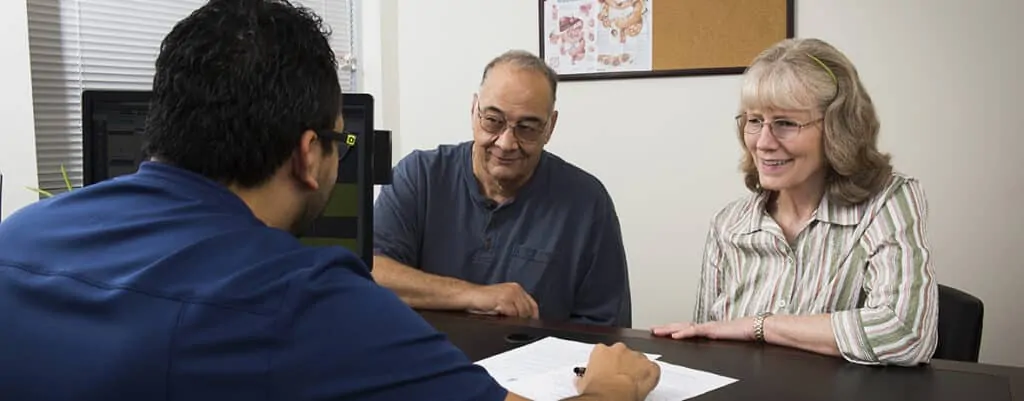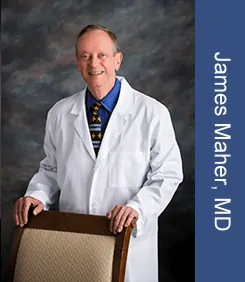It can be a challenging time when you’ve received a Fulshear TX carcinoid cancer diagnosis. You need expert help, and Dr. James Maher can help you on your journey. Call today or go online to request an appointment.
What is carcinoid cancer?
Carcinoid cancer is a neuroendocrine tumor, which is a type of tumor that releases hormones. They are slow-growing and usually start in the GI system or lungs. However, they can also be in the pancreas, appendix, and stomach. Further, they can spread to other parts of the body, including the liver, lymph nodes, blood vessels, brain, and heart.

Doctors debated for a long time on whether carcinoid tumors should be classified as benign or cancerous. The tumors grow so slowly that many patients live a completely expected lifespan without ever knowing they had cancer. However, depending on the location, the tumor can create serious health issues that can be fatal.
Since the tumors can be either deadly or benign, doctors combined the words carcinoma (for cancer) and adenomas (benign tumors) to name the tumor “carcinoid.”
What are the signs and symptoms of carcinoid tumors?
Unfortunately, early symptoms are mild and very broad, and a gastroenterologist may have difficulty diagnosing it. Symptoms depend on the location.
Appendix
Most of the time, carcinoid tumors in the appendix do not cause symptoms. However, if they block the entrance to the appendix and intestine, it can create appendicitis. Tumors that cause blocks are usually very big.
Signs of a tumor blocking the entrance to the intestine are similar to appendicitis: severe belly pain, nausea, and vomiting.
Small intestine
Small carcinoid tumors that grow in the small intestine will usually partially block off the intestines. The blockage isn’t complete, but it creates belly pain and cramps. The pain and cramps can make a person not as hungry, so they will lose weight and have fatigue, nausea, and possibly vomiting. In addition, the symptoms may appear suddenly only to disappear after.
Unfortunately, the tumor doesn’t usually create obvious signs until it completely blocks off the intestine. This is typically an emergency and causes extreme belly pain, along with nausea and vomiting.
Sometimes, the tumor will create intestinal bleeding. In this case, the patient may get anemia, which causes shortness of breath and fatigue.
Stomach
Stomach carcinoid tumors grow slowly. Usually, they do not cause symptoms. For that reason, they are often unnoticed until a doctor stumbles upon them during an endoscopy (looking into the stomach) for an unrelated reason.
What is carcinoid syndrome?
Carcinoid tumors release harmful hormones or chemicals into your bloodstream. However, unless the carcinoid tumor is in the liver, the liver will filter out the hormones, so carcinoid syndrome will not develop.
Tumors usually have to spread to the liver before Carcinoid Syndrome can develop. If the tumor is in the liver, the liver can’t filter the hormones before they enter your bloodstream. However, since the tumors are slow-growing, patients rarely get Carcinoid Syndrome.
People that develop Carcinoid Syndrome often experience symptoms that come and go, including:
- Flushed skin: Skin flushing is when your skin feels hot and changes color, anywhere from pink to purple. Usually, you’ll feel flushing in your face and upper chest.
- Purple-colored skin patches on your face: These patches often resemble spider veins and appear on the nose and lip.
- Diarrhea and stomach cramps: Some patients experience watery and frequent diarrhea episodes.
- Wheezing and shortness of breath: Carcinoid Syndrome can make it difficult to breathe. These symptoms often happen at the same time as flushing episodes.
- Racing heartbeat: There may be times when you suddenly have a very fast heartbeat.
What are my treatment options?
The first line of treatment is for a doctor, usually a gastroenterologist, to surgically remove as much of the tumor as possible. If the doctor can remove the whole tumor, the patient may be completely cured.
However, sometimes the doctor can only remove part of the tumor, or the doctor may not be able to remove any of it. In these cases, doctors prescribe chemotherapy. Patients may take medicine by mouth, but other times, a patient may need to have the treatment delivered into the bloodstream at a cancer center.
For example, if your Fulshear TX carcinoid cancer is wrapped around blood vessels or major veins, your doctor would not be able to surgically remove it.
As carcinoid cancer is rare, there are few known effective treatments. More cancer research is needed before doctors can better treat the disease. Your gastroenterologist can help you find and enroll in clinical trials, which can offer the best-known treatment plan.
What is the outlook for my Fulshear TX carcinoid cancer?

Generally speaking, carcinoid tumors are usually not fatal. In fact, about 99% of people with a gastrointestinal carcinoid tumor have a small, harmless tumor that they never know about. Further, in these cases, cancer doesn’t shorten their life.
Risk of spreading
The most common place a carcinoid tumor starts is in the small intestine. But of these, only 20% of carcinoid tumors spread to other parts of the body. Further, only a third of those that spread end up causing dangerous conditions like Carcinoid Syndrome.
However, having a carcinoid tumor in the small intestine means you have a 25% greater risk of developing a non-carcinoid tumor elsewhere, usually in the colon, lungs, breasts, or prostate.
Life expectancy
Most patients with carcinoid tumors have benign growths and never realize they have a tumor. Further, patients with small carcinoids that cause minor symptoms are often cured once a doctor surgically removes the tumor.
Studies show patients live 8 to 23 years if a doctor removed carcinoid cancer that has spread. If a doctor cannot remove the tumor, about half of patients survived for 5 years after a doctor diagnosed the tumor. However, clinical trials have dramatically improved treatments, and today, patients are expected to have an even longer survival rate.
About us

Dr. James Maher is board-certified in internal medicine and gastroenterology and serves patients from Houston and surrounding locations such as Katy, Fulsher, The Woodlands, and more. He has years of experience diagnosing various GI disorders and diseases, including GI carcinoid tumors.
Dr. Maher is associated with multiple hospitals across the Greater Houston Area, including Memorial Hermann Hospital, Memorial Hermann Surgery Center Katy, and Methodist West Houston Hospital.
Although a diagnosis of Fulshear TX carcinoid cancer can seem overwhelming, Dr. James Maher can help.
Fun facts about Houston, Texas
- Houston’s Buffalo Bayou is technically a river, and it runs 53 miles through Houston and Harris County.
- There are over 10,000 restaurants in Houston.
- The JP Morgan Chase Tower is the tallest building in Texas.
For more fun facts, visit the Houston website.
